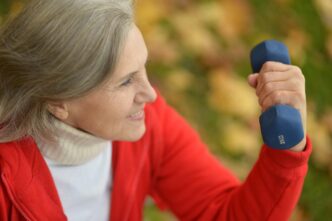A Quick Takeaway
The Story Behind the Trend
How to Make It Work for You
The Community View
Elevating your treadmill running experience begins with a crucial, yet often overlooked, piece of equipment: your shoes. For anyone who regularly logs miles indoors, selecting the right footwear is paramount to enhancing comfort, optimizing performance, and significantly reducing the risk of injury. Unlike outdoor running, the consistent, cushioned surface of a treadmill presents unique demands on your feet and body, necessitating shoes designed to meet these specific challenges. Understanding the nuances of treadmill running and how shoe features contribute to a better stride indoors is key for every runner looking to maximize their indoor workouts.
Why Treadmill-Specific Shoes Matter
While many runners use their outdoor running shoes for treadmill sessions, optimizing your footwear can make a substantial difference. Treadmills provide a more forgiving surface than asphalt or concrete, often absorbing some impact. This means that while cushioning remains important, the type and distribution of that cushioning might differ from what’s ideal for varied outdoor terrain.
Indoor running also typically involves less lateral movement and fewer abrupt changes in direction. This consistent environment allows for shoes that prioritize breathability and a stable, yet flexible, platform. Choosing shoes tailored for the treadmill can prevent premature wear on your outdoor shoes and provide a more focused, comfortable experience for your indoor training.
Key Features to Look For in Treadmill Running Shoes
When assessing shoes for your indoor runs, several features stand out as particularly beneficial. Prioritizing these elements will help you find a pair that feels like an extension of your foot, supporting every stride.
Cushioning and Responsiveness
The level and type of cushioning are vital. While the treadmill belt offers some shock absorption, adequate cushioning in your shoes still protects your joints. Look for a balance: enough plushness for comfort without feeling overly soft or “mushy,” which can diminish energy return. Responsive cushioning materials, often found in performance-oriented shoes, can provide a springier feel, helping to propel you forward with less effort.
Breathability
Indoor environments, especially gyms, can be warmer and less ventilated than the outdoors. As a result, your feet are prone to overheating and sweating more. Shoes with highly breathable mesh uppers are essential to keep your feet cool and dry, preventing discomfort and reducing the likelihood of blisters.
Flexibility
Treadmills offer a flat, consistent surface, meaning your foot will execute a relatively uniform motion with each stride. Shoes with good forefoot flexibility allow your foot to bend naturally through the toe-off phase of your gait cycle. This promotes a more natural and efficient stride, reducing strain on your feet and calves.
Weight
Generally, lighter shoes are preferred for treadmill running. With less need for heavy-duty outsoles or extensive protective features required for varied outdoor terrain, a lighter shoe can feel less cumbersome and more agile. This can contribute to a feeling of effortlessness, especially during longer runs or speed work.
Fit and Comfort
Above all, the shoe must fit well and feel comfortable from the moment you put it on. A snug, but not tight, fit in the midfoot, with enough room in the toe box for your toes to splay naturally, is ideal. Any rubbing, pinching, or excessive movement can lead to blisters and discomfort, disrupting your focus and potentially your workout.
Understanding Your Foot Type and Gait
Knowing your foot type and gait pattern is fundamental to selecting any running shoe, including those for the treadmill. Most runners fall into one of three categories:
Neutral Pronation
If your foot rolls inward minimally and effectively absorbs shock, you have neutral pronation. You can typically wear neutral cushioned shoes that prioritize shock absorption and flexibility without added stability features.
Overpronation
This occurs when your foot rolls excessively inward after landing. Stability shoes, which feature denser foam or support structures on the medial (inner) side of the shoe, are designed to guide your foot into a more neutral alignment, preventing potential injuries.
Supination (Underpronation)
Less common, supination involves the foot rolling outward excessively. Runners with supination often benefit from highly cushioned, flexible neutral shoes that allow for natural foot movement without restricting their outward roll.
You can get a basic idea of your foot type with a “wet test” by looking at your footprint, but a professional gait analysis at a specialized running store offers the most accurate assessment.
Top Shoe Categories for Treadmill Runners
While specific models change with seasons, certain categories consistently offer excellent options for treadmill use:
Highly Cushioned Neutral Trainers
These shoes offer maximum comfort and shock absorption, ideal for long, steady-state runs. They are perfect for neutral runners or those seeking a plush feel to mitigate the repetitive impact of the treadmill.
Lightweight Performance Trainers
Designed for faster paces and tempo runs, these shoes offer a more responsive feel with less bulk. They typically have a firmer ride and good flexibility, making them suitable for interval training or when you want to pick up the speed.
Stability Shoes
For runners who overpronate, stability shoes provide the necessary support to keep the foot aligned. Modern stability shoes often achieve this without feeling overly rigid, offering a comfortable and supportive ride for indoor miles.
Maintaining Your Treadmill Shoes
Even with optimal care, running shoes have a finite lifespan. Most running shoes last between 300 to 500 miles, or roughly 4 to 6 months of regular use. For treadmill runners, consistent indoor use means tracking your mileage is crucial. Pay attention to signs of wear, such as compressed cushioning, worn-down outsoles, or new aches and pains that signal it’s time for a fresh pair. Rotating between two pairs of shoes can also extend their life and allow cushioning to rebound between runs.
Final Stride: Prioritizing Your Indoor Comfort
Choosing the right running shoes for the treadmill is a significant step toward a more comfortable, efficient, and injury-free indoor running routine. By focusing on appropriate cushioning, breathability, flexibility, and a precise fit that matches your foot type and gait, you can transform your treadmill sessions. Remember to try on several pairs, run a few strides in each if possible, and always prioritize how the shoe feels on your foot. Investing in the right footwear is investing in your running health and enjoyment, ensuring every indoor mile contributes positively to your fitness journey.








